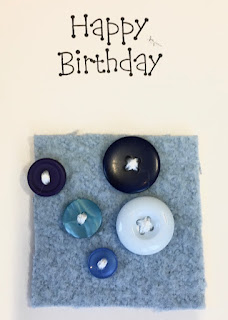The following information is taken from Barnyarns website. We thought it might be useful to pass it on to members, since using metallic threads can sometimes be a trial.
One of the most common problems - even for the most experienced machine embroiderer - is successful stitching with metallic thread. We’ve experienced it all: fraying, looping, tension problems, and continual thread breaks are enough to discourage anyone and it’s such a shame for two reasons—- everyone loves the bit of bling that metallic thread offers, and second, absolutely anyone with any machine should be able to stitch, sew, or quilt with metallic threads successfully! So, at this time of year, when all is shimmering outside, let’s take it step-by-step and highlight the process of embroidering a snowflake with gorgeous metallic thread while recommending solutions to common problems.
Follow the THREE Golden Rules of Metallic Thread:
#1 - At the spool (or cone) - When stitching with a spool of Metallic thread, use the vertical spool pin. If your machine doesn’t have a vertical spool pin, we recommend using the Superior Thread Holder when embroidering with cones and spools of metallic thread.
#2 - Inside your machine - Most embroidery machines have electronic automatic tension and it’s preset from the factory to run a generic embroidery thread. As smart as your machine is, it has no way to tell that you are stitching with a metallic thread instead of a standard polyester embroidery thread. We recommend loosening your top tension (override your automatic tension settings) all the way down to 1.0. Metallic thread is one of the most delicate threads due to its unique construction, so a loose top tension is required for frustration-free stitching. Friction and metallic threads do not make a good mix. Refer to your machine’s manual to learn how to override the default tension settings.
#3 - At the needle - The way metallic thread is made follows a unique process. Strands of thin metal foil are delicately adhered to a film and wrapped around a strong nylon core. When embroidering, you have a high number of stitches per minute rapidly creating tiny stitches in a dense design. The thread is moving back and forth through the eye and groove of the needle, rubbing against the metal surface in a fast manner. All it takes is for the delicate metallic foil to break, and only the nylon core will be moving through the eye, as your beautiful metallic overlay starts to push back up into the machine.
Again, thankfully the solution is very easy: use a needle with a larger eye and deeper groove. We recommend using a Topstitch #90/14 needle. Superior Topstitch needles have a longer and wider eye, deeper groove to protect thread during stitch creation, and a thin layer of titanium-nitride that resists friction and keeps your needle sharper much longer. Compare the Topstitch style to any of your embroidery needles and you’ll see the difference. Having more space in the eye of the needle helps reduce the stress placed on the thread as it passes at a high rate of speed through the needle and creates a stitch.
For further information on using threads, or to purchase products, visit:























